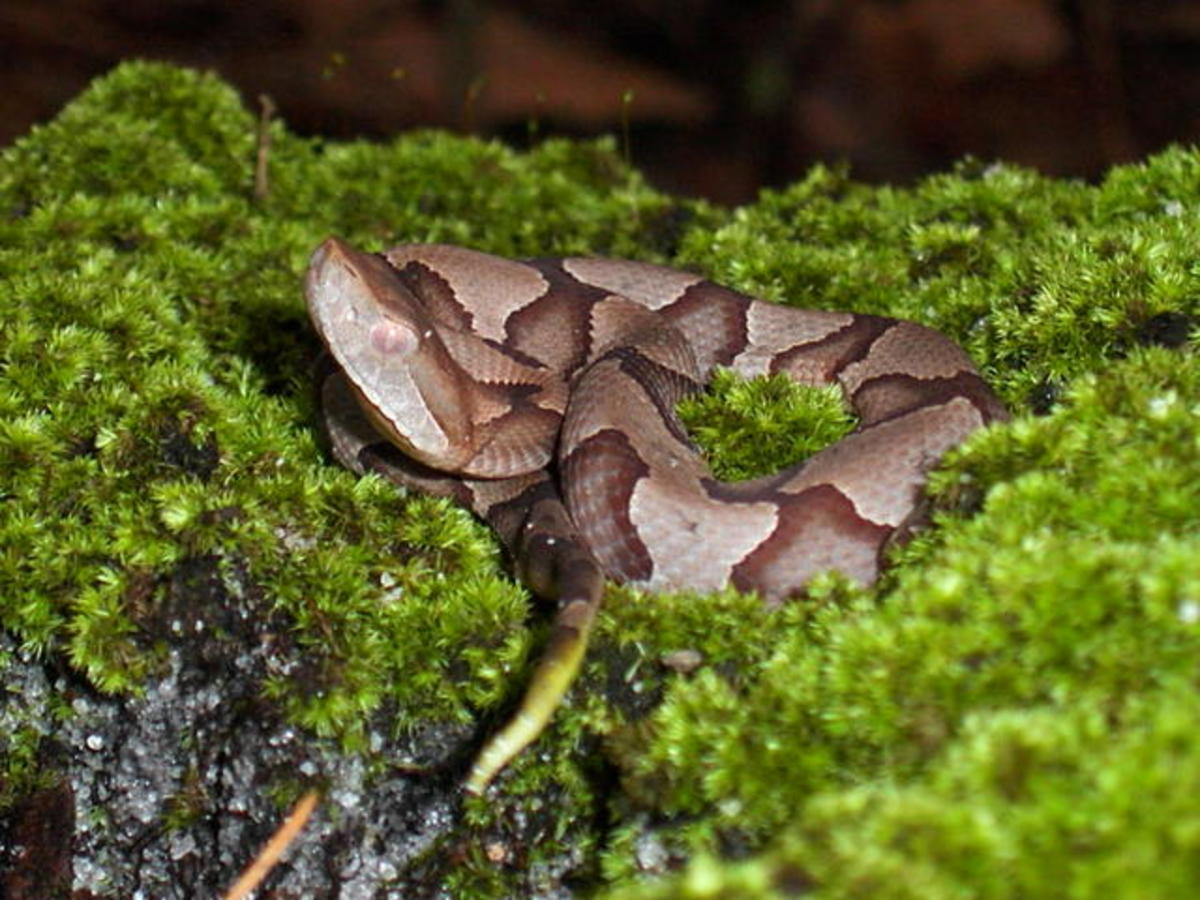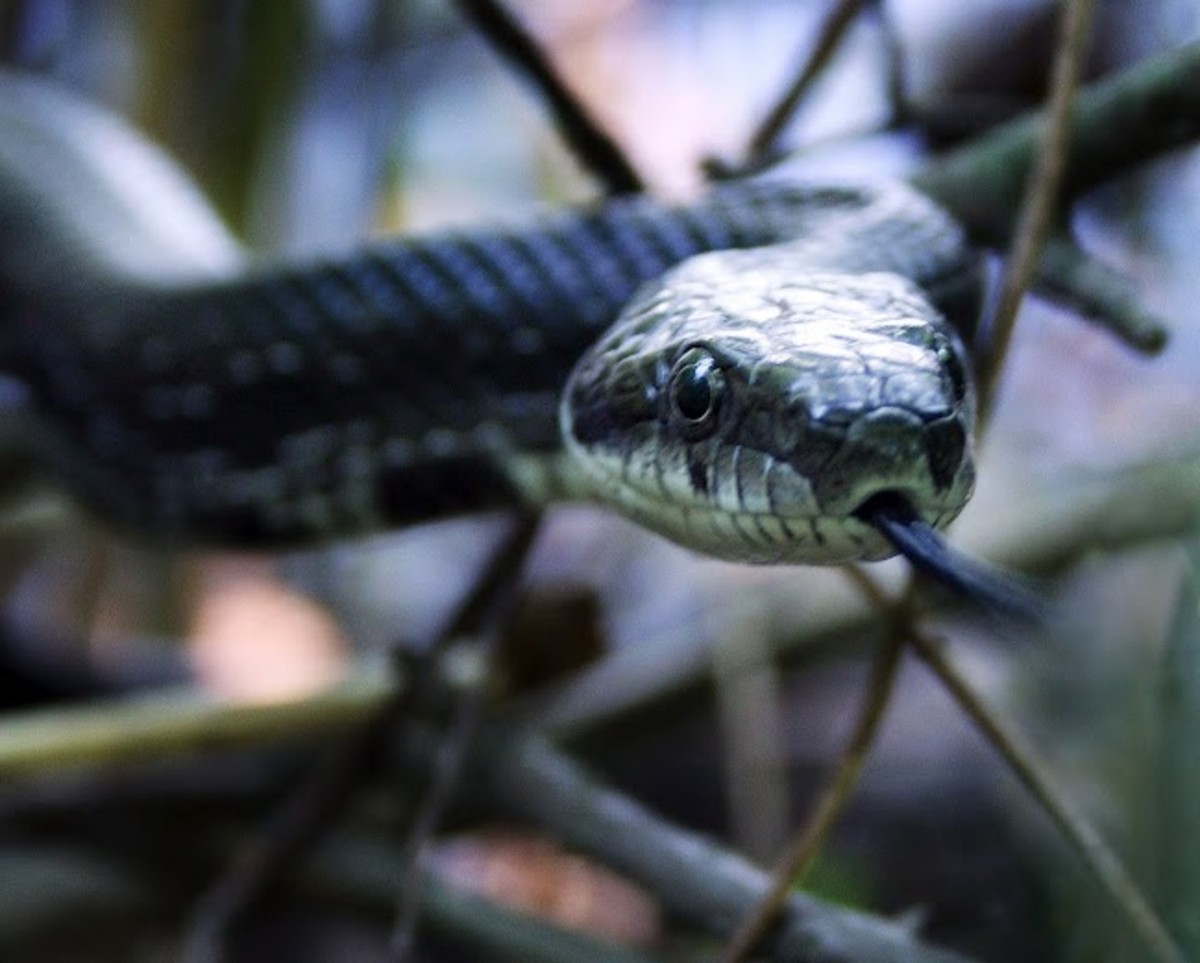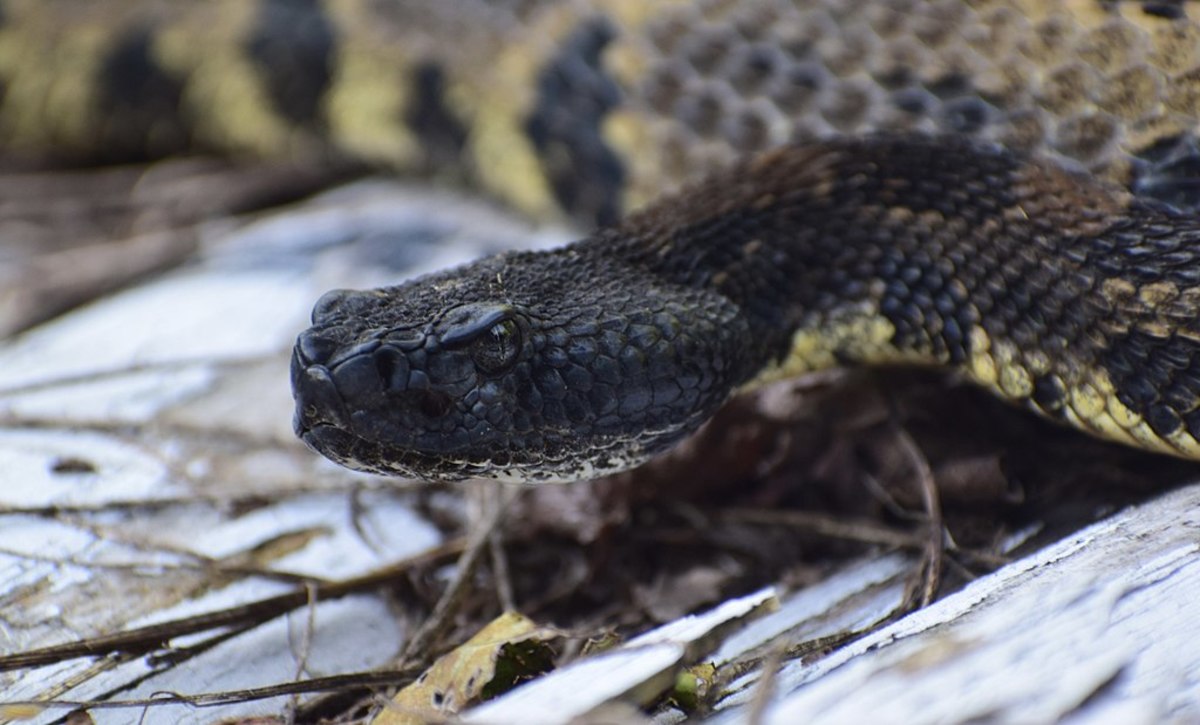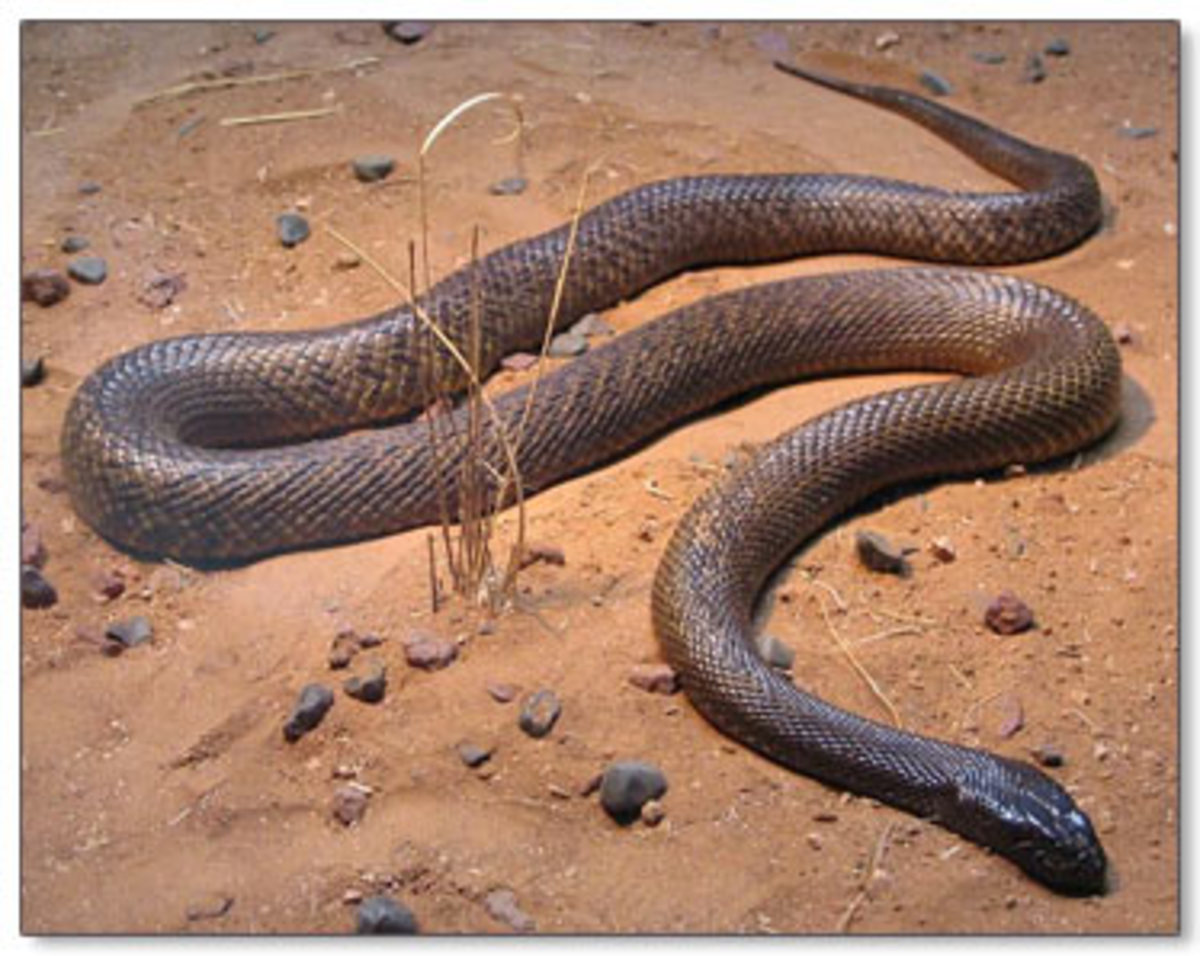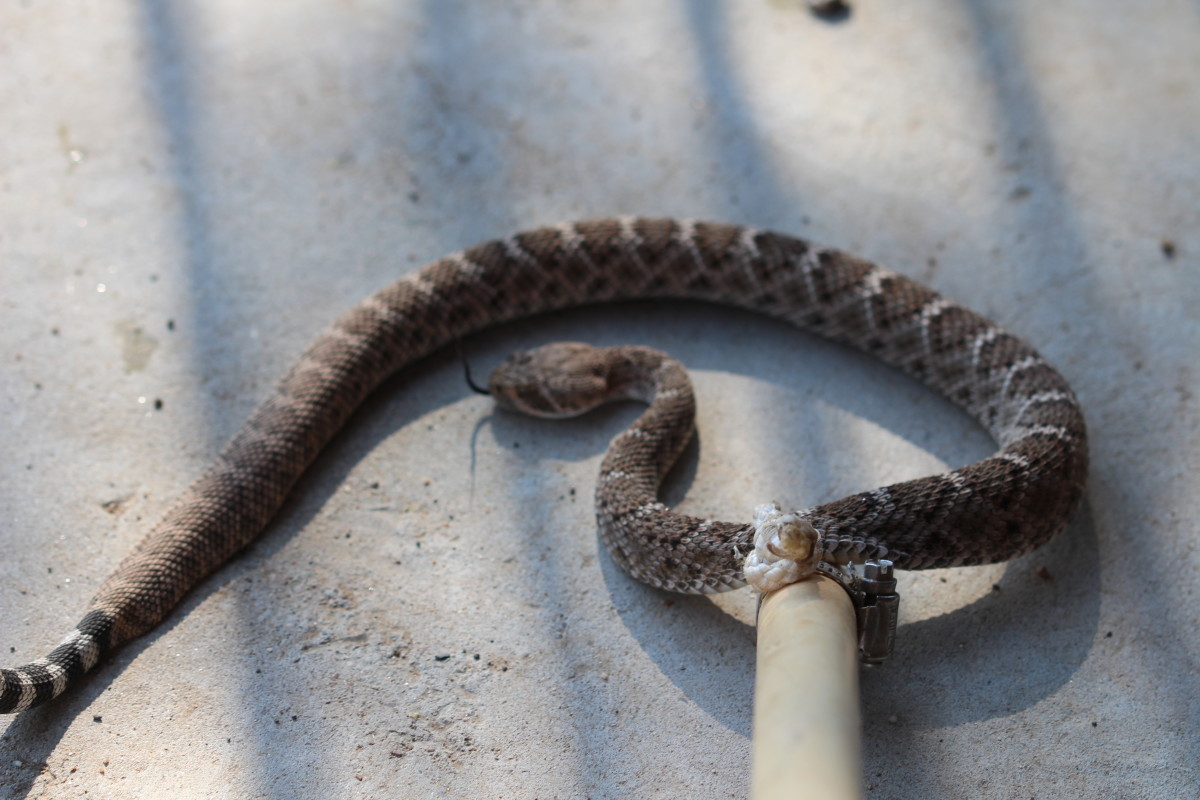Western Diamondback Rattlesnake
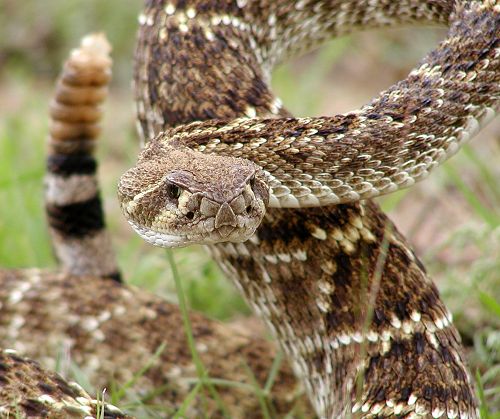
Western Diamond Rattlesnake Scientific classification
Kingdom:Animalia
Phylum:Chordata
Subphylum:Vertebrata
Class:Reptilia
Order:Squamata
Suborder:Serpentes
Family:Viperidae
Subfamily:Crotalinae
Genus:Crotalus
Species:C. atrox
Binomial name
Crotalus atrox
The Western Diamondback Rattlesnake, (Scientific name: Crotalus atrox) can be found, from California to West Texas and Central Mexico. They live in arid and semi-arid, shrubby and rocky slopes, up to 2100 meters above sea level.
They can reach 2 meters in length (6,5 ft), although, but on average, they do not exceed 1.7 meters in length.Their life expectancy is more than 20 years.
There is no sexual dimorphism in this species until sexual maturity, then males become larger. They can be of a grey, brown, olive, or reddish/brown color. The color and pattern of the skin of these snakes greatly facilitates their camouflage on the sand or the rocks of their habitat (designated, for this reason, cryptic coloration).
The skin has several shades of brown and a pattern of spots on the back that resemble diamonds in the shape, this species has also diagonal stripes (one dark and two light) in the lateral areas of head and black and white rings involving tail just before the rattle. The pattern skin of this species is very similar to the pattern of the Eastern Diamondback Rattlesnake (Crotalus adamanteus), but the tone is much more attenuated than that, except in the rings of the tail.
The Western Diamondback Rattlesnake has special teeth that serve as venom inoculators, possessing internal channels connected to venom glands that are located in the frontal region of the upper jaw, these teeth are relatively long, retractable and protected by a membrane.
They exhibit typically a rattle at the tail end, which is composed of a series of corneal rings (modified scales), which will be loosely overlapping on each skin change and produce audible sound when they collide with each other. It is thought that the rattle evolved as a warning to large animals of the prairie, like the American Bison, do not tread the rattlesnake. However, these snakes, like others of its genus, can attack without indicating, with the rattle, his presence.
The Western Diamondback Rattlesnake hunts by ambush, after the bite, the rattlesnake releases its prey and pursue it until the poison take effect, which normally happens soon after. The Western Diamondback Rattlesnake is most active at night and at dusk. They hibernate during the winter, usually in rocky cavities where they gather several individuals.
The Western Diamondback Rattlesnake venom consists essentially of hemolytic function enzymes, elements which destroy blood coagulants, causing large internal bleeding. The venom is used first to kill the prey and facilitate their digestion, and may also be used as a defense. The venom inoculator teeth , of these rattlesnakes may sometimes be retained in the victim's body being subsequently replaced.
Other Hubs About Snakes
Western Diamondback Rattlesnake common names:
Arizona Diamond Rattlesnake
Texan Rattlesnake
Texas Diamond-back Rattlesnake
Desert Diamond-back
Desert Diamond Rattlesnake
Fierce Rattlesnake
Spitting Rattlesnake
Western Diamondback Rattlesnake diet
They feed on small mammals (especially rodents and rabbits) and birds, can also capture other reptiles or amphibians.
Western Diamondback Rattlesnake reproduction
It is a species ovoviviparous (eggs are kept inside the body of the female during embryonic development). Mating occurs in spring after the hibernation period. There are ritualized fights between males, in which opponents raise the front of the body, curl up with each other and push each other with their heads, until one of them abandons the fight. The offspring from 10 to 20 young is born after about 170 days of embryonic development, often in July and August. They reach sexual maturity at about three years old.
Western Diamondback Rattlesnake Conservation status and main threats
This species is not globally threatened (by the International Union for Conservation of Nature), it is a very adaptable species and highly prolific.
However, this highly irritable and dangerous snake is the snake that causes more human deaths in the U.S. and is therefore the object of persecution. Rattlesnakes are a key element of Native American culture. The skin, meat, oil and extracted venom of Western Diamondback Rattlesnakes are used by humans for many purposes.


